lies like truth: October 2009 Archives
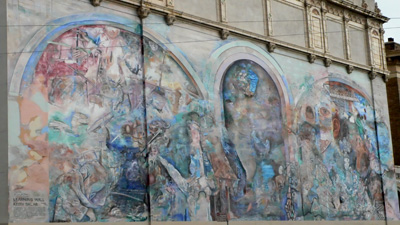 The San Francisco Public Schools commission is running a marketing campaign right now. The slogan on posters dotted in bus shelters and elsewhere around town is "The City is Our Classroom." "That's all well and good," I thought as I walked passed a poster on a walk around the neighborhood this morning. "But that doesn't make up for the fact that classrooms, in the conventional use of the word, aren't necessarily doing their job anymore in this city." I was thinking in particular of my recent visit to San Francisco's rundown School of the Arts (SOTA) (see my blog entry of two days ago) which left a a bitter taste in my mouth.
The San Francisco Public Schools commission is running a marketing campaign right now. The slogan on posters dotted in bus shelters and elsewhere around town is "The City is Our Classroom." "That's all well and good," I thought as I walked passed a poster on a walk around the neighborhood this morning. "But that doesn't make up for the fact that classrooms, in the conventional use of the word, aren't necessarily doing their job anymore in this city." I was thinking in particular of my recent visit to San Francisco's rundown School of the Arts (SOTA) (see my blog entry of two days ago) which left a a bitter taste in my mouth.In this pensive mood, I walked around the corner and came across Keith Sklar's 1989 mural, "Learning Wall." Sklar's enormous, psychadelic triptych is looking really faded. I read somewhere online that the artist had scrubbed out some portions of it a while ago. Not sure if that's true, or if it is, why he would have done such a thing.
I walk past Sklar's mural almost every day as I live close by, but not until this morning did I really stop to look at it closely. It's hard to figure out what's going on as the work is so busy. The main theme (a popular one in Bay Area murals) seems to be cultural pluralism. There are Inca heads, Chinese stringed musical instruments, Ancient Egyptian effigies and all manner of patterns and people. At the top is a motif of people holding hands. The whole thing swirls with color and texture like a giant bubbling cauldron of knowledge and ideas.
I can't say it's beautiful to look at, especially in its current faded, grimy state. But it serves as a reminder that education was at one point prized in this city. The mural is painted, somewhat ironically, on the side of an old, vacant and rather beautiful Department of Education building. I heard rumors that SOTA is eventually supposed to move from its current location in the fog belt into these premises. Financing, I suppose, prevents this from happening any time soon (if indeed this plan is more than a rumor.) It would be great if SOTA would move downtown. That would put the arts high school right next to the Symphony, Opera, Ballet and Conservatory of Music, not to mention the New Conservatory Theatre Center, The Asian Art Museum, the main branch of the San Francisco Library, the Herbst Theatre and several private galleries.
I imagine Sklar's "Learning Wall" is more likely to get a fresh coat of paint before that happens though.
 It's a wonder that I ever got sent to the US as a technology correspondent for a major British newspaper back in 2000, really. My lack of prowess at -- and genuine interest in -- figuring out the nuts and bolts of everyday applications I use is not something of which I'm proud. But there's only so many things I can pay attention to on any given day, and worrying about which format I transfer audio files to and from my laptop sadly isn't one of them.
It's a wonder that I ever got sent to the US as a technology correspondent for a major British newspaper back in 2000, really. My lack of prowess at -- and genuine interest in -- figuring out the nuts and bolts of everyday applications I use is not something of which I'm proud. But there's only so many things I can pay attention to on any given day, and worrying about which format I transfer audio files to and from my laptop sadly isn't one of them.I was made to feel the full force of my technophobia yesterday afternoon when I went across the Bay to Berkeley to guest-lecture for an hour at an adult "vocal music appreciation" class. Unlike many serious music fans (and most classical music journalists) I don't keep my music library on CD, only digital audio files on my computer, even though most people in my line of work proselytize against this for reasons of quality. I don't perceive a huge difference in the quality of a CD versus most of the audio files on my laptop. frankly. Then again, computer audio files do vary radically in quality, which is a detail I confess that I need to pay closer attention to.
So I turned up to class with a playlist in an embarrassingly motley range of file formats. Some of them were near-CD quality. Others, I must confess, I'd yanked off YouTube using AudioHijack, and the quality was far, far from perfect. One or two of the tracks sounded like they were being played at the bottom of a well.
The teacher of the class was not impressed. He had the most staggeringly stagey audio setup I'd seen in a while, with speakers resting on ball-bearings. You couldn't so much as breathe on the shiny black objects without causing him to get upset. I got a public dressing down for having some of the tracks as MP3 files rather than the more up-to-date AIFF files. "Did you rip some of this stuff off the Internet?" I was asked with a critical "tsk" halfway through the class.
I dunno. Of course it's preferable to have optimal quality when you're listening to music. It's always better if you do. But having a slightly-less-than-perfect listening experience isn't going to cause your eardrums to explode. And going with a not-extremely-good output is OK too if you're under duress (ie you want to play something that is only available on YouTube) and using the music sample to make a general point rather than listening intensively in private.
The students in the class didn't seem to mind all that much anyway. Many of them came up afterwards to say how much they'd enjoyed the lecture. And hopefully the teacher forgave me for my sin. Rest assured, though: I'll be paying closer attention to audio file formats in the future. Lesson learned.
 Articles about how the recession is affecting the arts in San Francisco are commonplace these days. Janos Gereben's October 25 piece in The San Francisco Examiner brought the point home once again.
Articles about how the recession is affecting the arts in San Francisco are commonplace these days. Janos Gereben's October 25 piece in The San Francisco Examiner brought the point home once again.But it's hard, as the article's headline states, to think that "optimism abounds" when you visit a place like the San Francisco School of the Arts High School (SOTA.) I visited the school for the first time the other day for a meeting and was shocked by the state of the buildings. They were more run down than any other school I've ever seen (and I've seen some pretty run down schools in the Bay Area.) The walls were dirty, many of them covered in graffiti. The corridors were grimy, the restrooms had dripping faucets and smelled bad. The classrooms were similarly derelict. The teacher with whom I had my meeting says he didn't have a desk, chairs or pencils in his classroom for the first few weeks after he arrived. He had to beg, borrow and steal these basic items. In the middle of our get together, a rat scuttled across the room. We had to leave.
How have things gotten to this point? SOTA is an amazing institution which turns out incredibly accomplished students, some of whom go on to forge successful careers in the arts. The environment in which people are forced to learn and teach is scary, frankly. I'm amazed that anyone can learn to play a concerto on the cello or rehearse for a play in this setting.
We do not live in a third world country. We need to do something about this fast.
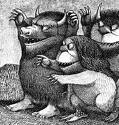 In the middle of the San Francisco Contemporary Jewish Museum's (CJM) exhibition of works by the illustrator and children's book author Maurice Sendak is a picture of one of the scariest looking chickens you ever saw. Painted in kaleidoscope colors with tail feathers more dense and intimidating than the flora of an exotic jungle, legs and claws as thick and gnarled as ancient tree trunks and an imperious look in its eye, the bird couldn't possibly look less benign. You have to take a step away from the wall to remind yourself that you're not looking at the globe's next major global threat, but a cartoon drawing of livestock.
In the middle of the San Francisco Contemporary Jewish Museum's (CJM) exhibition of works by the illustrator and children's book author Maurice Sendak is a picture of one of the scariest looking chickens you ever saw. Painted in kaleidoscope colors with tail feathers more dense and intimidating than the flora of an exotic jungle, legs and claws as thick and gnarled as ancient tree trunks and an imperious look in its eye, the bird couldn't possibly look less benign. You have to take a step away from the wall to remind yourself that you're not looking at the globe's next major global threat, but a cartoon drawing of livestock.Many images in the CJM's Sendak exhibition have this -- or the opposite -- effect on the viewer. The most benign creature has a sinister quality about it; and the most hideous of all ogres possesses an angelic soul.
Take the many illustrations of monsters on display. They have pointy teeth and enormous claws. They look like they should be able to eat a small boy for lunch. Yet there's something so magnetic about the way in which the artist draws faces and creates poses for his characters, that even the scariest-looking beasties seem approachable. In one memorable image from the show, for instance, a couple of simple worry lines added below the eyes of a hairy monster gives the creature a human personality. People wear their concerns in this way.
The exhibition sets out to demonstrate the partially-hidden "other story" in Sendak's work. Looking at the pictures is a game of trying to uncover the sub-meanings beneath the alternately cute- or cruel-seeming canvases.
Solving the puzzles is fun. But the lengthy and sometimes unhelpful descriptive plaques that explain the mysteries to museum-goers are rambling and heavy-handed in places. And the fact that the exhibition is curated within the walls of a Jewish museum also imposes meaning upon the images that may not necessarily be as overt a part of their makeup as the museum would have us think. References to the Holocaust and Sendak's difficult childhood abound. Knowing about the influence of 20th century Jewish history on the artist's work provides a fascinating context for the double meanings in his art. But the curatorial Holocaust descriptives are so over-labored that they come to define the pictures, in the end skewing our view of the artist's legacy.
In the end, I found myself tuning out the Jewish stuff and simply enjoying Sendak's sublime sense of the ridiculous. His pictures of kids in zippered wolf costumes and zany approach to child etiquette in the book What Do You Do, Dear? touched me most of all.
 It's a curious and not always desirable thing when an artist becomes so closely identified with one canonical work that the rest of their work gets ignored.
It's a curious and not always desirable thing when an artist becomes so closely identified with one canonical work that the rest of their work gets ignored.On Friday, I had the honor of spending a little while in the company of composer Terry Riley up at his home on the Nevada border. (I didn't file a blog entry on Friday because I was traveling all day; sorry, dear readers, usually I'm much better at letting you know in advance that I'll be out of town.)
During the course of conversation over herbal tea on the soft-spoken composer's rustic wooden wraparound porch, Riley talked about his seminal minimalism movement-inspiring ensemble work, In C. He touched upon everything from how the work came to be and what the legendary opening night performance at San Francisco's Tape Music Center in 1964 was like, to his feelings about different performances and recordings over the years and the work's reaction against the overly-intellectual serialist fashions of the mid-20th century.
With regards to a question about the potential future of In C, Riley, who has this Buddha-like presence about him, became slightly piqued for the one and only time in our interview. When I asked the composer: "what are your wishes for the future of In C?" he responded that he hoped people would start paying attention to some of his other music for a change.
As beloved as the work is -- and as much as it has helped to pay the bills -- I can imagine how frustrating it must be for the composer to mostly only ever get to talk about and hear this one work. There are dozens of recordings of In C on Amazon.com, (four pages worth!) but relatively few of Riley's other works. Rainbow in Curved Air comes in second with two pages of CDs.
I imagine F Scott Fitzgerald had a similar problem with The Great Gatsby and George Lucas, similarly, with the original Star Wars trilogy.
I guess that's where critics can make a difference. In cases where an artist deserves to be known for more than one project (which isn't always the case, though it is when it comes to Riley) let's try to expose our audiences to a broader variety of an artist's output so that his or her legacy isn't forever associated with just one canonical work.
 Ukulele virtuoso Jake Shimabukuro has made a name for himself for pushing the ukulele to its aesthetic limits. But is it necessary to push the instrument so far that we don't get to hear the uke at all? Shimabukuro's San Francisco Jazz Festival concert last night at Davies Symphony Hall started off as a bit of a letdown, frankly, primarily because the performer seemed intent on having us forget that he plays the uke at all.
Ukulele virtuoso Jake Shimabukuro has made a name for himself for pushing the ukulele to its aesthetic limits. But is it necessary to push the instrument so far that we don't get to hear the uke at all? Shimabukuro's San Francisco Jazz Festival concert last night at Davies Symphony Hall started off as a bit of a letdown, frankly, primarily because the performer seemed intent on having us forget that he plays the uke at all.The instrument was miked, completely ruining its delicate sound. Thanks to this and long sections of rock-style strumming, the uke sounded more like a guitar than anything else. At times, such as when he played a song in the style of a koto (a Japanese 13-stringed instrument), the effect was mesmerizing. More often than not though, I got bored by the performer's endless attempts to look and sound like a member of Nirvana or the Black Eyed Peas.
In the second half of the program, things picked up. Shimabukuro started plucking his instrument with much more regularity. Intricate finger-work, passionate delivery and wide-ranging dynamics infused all the pieces he played. I particularly loved his use of harmonics. He made his instrument sing and for the first time in the evening's program, he showed us what the ukulele really sounds like when it's played damn well. At last, I felt like I was listening to the instrument I came to hear.
By the time the finale rolled around, the musician's never-before-performed take on Queen's schizophrenic idyll, Bohemian Rhapsody, (you have to hear Shimabukuro play this song to understand what an amazing musician he is) I was a complete convert to his sound.
 A question to all you culture writers and artists out there: How do you cope with the guilt of not getting to experience even a fraction of your city's arts offerings? It's an embarrassment of riches.
A question to all you culture writers and artists out there: How do you cope with the guilt of not getting to experience even a fraction of your city's arts offerings? It's an embarrassment of riches.Times are hard. But people are harnessing their creative energies as much as they've ever done. If only I could find a creative solution to the problem of there not being enough days and nights in the week to see all the work being produced. Did I say "all"? If I went out to experience a performance every single evening of the week, caught gallery shows and other daytime activities in the light hours and saw all the matinees I could, I still couldn't hope to cover the Bay Area's cultural scene at the most basic level.
Quick: Someone invent a drug that will allow me to be in 19 places at once.
 Sick of boring standing ovations and polite clapping? Wish audiences would show their feelings about a performance in a more visceral way? The San Francisco-based theatre company PianoFight has the answer: Have audiences throw vegetables at the performers at curtain time.
Sick of boring standing ovations and polite clapping? Wish audiences would show their feelings about a performance in a more visceral way? The San Francisco-based theatre company PianoFight has the answer: Have audiences throw vegetables at the performers at curtain time.PianoFight, which should consider renaming itself "FoodFight", presented its inaugural Throw Rotten Veggies at the Actors Night immediately following a performance of its latest production S.H.I.T. Show Deluxe last Friday night at Studio 250 / Off-Market Theatre. You can find out more about the event here and watch a short YouTube video here.
I was surprised to find out from PianoFight's artistic director, Rob Ready, that "lies like truth" had played a role in bringing about this auspicious occasion. A blog entry I wrote a year ago about the ongoing progress of Free Night of Theatre, a nationwide audience development concept that was piloted in San Francisco five years ago, prompted an exchange between Rob, Brad Erickson (the head of Theatre Bay Area) and I in the comments area of the blog, which in turn inspired Throw Rotten Veggies Night.
In response to Brad's comments to my blog post, Rob (writing under the moniker Carl Benson) wrote:
"I guess my over all point is this: instead of giving away the product to find new audiences, why don't we have National New Play Night/Week/Month/Year? Or how about National Throw Veggies at the Actors Night? I would totally get on stage for that, and I guarantee most of my friends would be there in the audience, hands full of rotten tomatoes. Really, all I'm saying is for theater to create new audiences, in a world where it's easier to access an audience using technology, theater has got to start having more fun. That's what people generally want when they go out, fun. Hard hitting is good, politically charged is good, socially conscious is good, but if they're not balanced with being entertained and having a good time, nobody is coming to the theater, especially in a time where spending cash is sparse and the TV is free."
To which I responded:
"The idea of holding a National Throw Veggies at the Actors Nigh is intriguing. Why not start one up locally?"
To which Rob replied:
"You got it."
And the rest as they say, is history.
PianoFight is hoping to expand Throw Rotten Veggies Night to other companies in the future. Says Rob: "I actually pitched the idea to a theater company at Queens University in Canada, called the Queens Players. My goal was to get a company in another country so we could dub the event "International Throw Rotten Veggies at the Actors Night" -- a bit of a one-up on TBA's "National Free Night of Theater" -- but they apparently weren't into the idea." Undaunted, PianoFight still aims to get more theatre companies involved. The group has apparently written a 20-30 minute set of "veggie tossing tailored sketch comedy" which other ensembles can use as a basis upon which to build a soiree of turnip and carrot lobbing.
I couldn't get to the event last Friday, but Rob says it went down quite well. "Even a couple girls who were sitting in the front row and got pelted in the back of the head with veggies throughout the set were all smiles afterwards and came out to the bar with the cast afterwards. I overheard one woman remarking to her husband with a big grin on her face, 'That was complete mayhem.'"
 As every understudy knows, it's very difficult stepping into a star's shoes when you know everyone has paid to see someone else in the role -- not you.
As every understudy knows, it's very difficult stepping into a star's shoes when you know everyone has paid to see someone else in the role -- not you.Diana Damrau is no understudy. The German soprano made Metropolitan Opera history in the 2007-2008 season when she appeared as both Pamina and Queen of the Night during the same run of Mozart's The Magic Flute. This season she will undertake four debuts, as Marie in Donizetti's La fille du régiment at both San Francisco Opera and the Met, the title role in Massenet's Manon at the Vienna State Opera, Ophélie in Ambroise Thomas's Hamlet at the Washington National Opera and Donna Anna in Mozart's Don Giovanni at the Grand Théâtre de Genève. The soprano will also perform the title role of Aminta in a new production of Strauss' Die schweigsame Frau at the Munich Opera Festival.
Yet it must be strange for this performer, as accomplished as she is, to step into the role of Marie in a production of La Fille at San Francisco Opera which previously carried so much star power at The Met and London's Royal Opera House.
In its previous iterations, Laurent Pelly's production featured two of the biggest stars in the opera world -- Juan Diego Florez as Tonio and Natalie Dessay as Marie. Most people I know in San Francisco who have seen or are going to see the current run are going primarily to see Florez. I've even heard some patrons say how much they wish they could experience the chemically-combustive combination of Florez and Dessay like those lucky opera goers in New York and London. In short, say the name "Diana Damrau" in these parts and you're likely to get a blank stare.
So it was terrific to see Damrau not only do Marie justice but also make the character completely her own -- quite a feat considering that she was dressed in exactly the same gamine outfits complete with Pippie Longstocking-like wig as her predecessor in the role, Dessay.
Damrau isn't as waifish as Dessay, but she's slim, light on her feet and full of gumption. Her willfulness and strength of character come through strongly in both acts. She's a great stage comic but also brings incredible sensitivity to her role. I believed completely in the mutual adoration between her and Florez's character.
Damrau matches Dessay equally in her vocal abilities. There's evenness and strength throughout her range. Her ornamentation is light and pure. She enunciates clearly and manages to convey the meaning of her words deeply through the quality of her singing.
Damrau doesn't yet have the star power of Dessay. San Francisco audiences are more excited at the prospect of Florez hitting his standing ovation-prompting nine high c's in "Ah Mes Amies" than hearing Damrau ace "Il Faut Partir." But it's probably only a matter of a couple of years before this superlative soprano's name is on everyone's lips -- even out here on the west coast.
 Had an unusual performance experience yesterday which threw up some thoughts about the nature of the exchange that happens between performers and audiences. I was part of a small group of singers drafted under the auspices of a current member of the University of California at San Francisco medical faculty to perform songs for patients on the wards of the university cancer center. I jumped at the chance to sing with this group because I have been interested for a while in the efficacy of arts programs in hospitals and heard great things about the uplifting effect that singing can have on the spirits of people in poor health.
Had an unusual performance experience yesterday which threw up some thoughts about the nature of the exchange that happens between performers and audiences. I was part of a small group of singers drafted under the auspices of a current member of the University of California at San Francisco medical faculty to perform songs for patients on the wards of the university cancer center. I jumped at the chance to sing with this group because I have been interested for a while in the efficacy of arts programs in hospitals and heard great things about the uplifting effect that singing can have on the spirits of people in poor health.We spent a couple of hours in the afternoon wedged first in the corner of a waiting room and second in a small lounge area where we performed a selection of a cappella songs -- madrigals, show tunes and standards mostly.
What was strange about the experience from a performer's perspective was how seemingly disinterested or even absent our target audience was. In the waiting room, the listeners were all lined up against a wall wearing protective face masks. Hardly any of them looked our way and no one applauded. When we were done, we just shuffled out without a word. Everyone in the room stared blankly ahead of them. We did get an appreciative nod from one or two nearby staffers though. I was happy to sing, but I couldn't help wondering if the patients would much rather we hadn't been there interrupting their peace. After all, we were intruders; they couldn't leave the room. The situation in the coffee lounge was possibly even weirder. The nurse seemed happy to see us and said she'd send word around. But for the first 15 minutes of our set no one came so we sang for ourselves. Eventually three people turned up but none of them were patients. I think one was a nurse and the other two, visiting relatives of a patient. They seemed to enjoy the music. But, again, these were not the people we had been drafted in to perform for.
Now, I don't mean to sound like all I care about is audience attention. But it does seem a little odd to rehearse for weeks within the framework of an organized hospital arts program only to fail to connect in any way with the target audience. Perhaps patients who heard our singing down the hallway did get something (hopefully positive) out of the music. Maybe the fact that we showed up is all that matters. It's not about us, after all; it's about them. On the other hand, might our efforts be more useful to the hospital if we actually got to sing in front of patients, preferably ones who knew we were coming and wanted to hear us?
I'm going back to UCSF next Tuesday. I hear from our industrious and dedicated music director, Debbie, that every performance that the group has undertaken so far at the hospital is different. (I was in Los Angeles for the first few outings, so yesterday was my debut as part of the ensemble.) So maybe next time we'll have a genuine audience. But here's a question: Is it enough simply to show up and sing on a cancer ward? Or is the exercise pointless if your target audience is seemingly disinterested or completely absent?
 Real sorrow is very hard to pull off on stage or screen. I often think that if you want audiences to feel the weight of a character's woes as a screen or playwright, you're usually better off getting them to do something funny, rather than give them a crying scene. It's just really hard to act sadness convincingly. Even if we can see that a character is deeply upset about something, it's a rare actor who can make us actually feel their pain.
Real sorrow is very hard to pull off on stage or screen. I often think that if you want audiences to feel the weight of a character's woes as a screen or playwright, you're usually better off getting them to do something funny, rather than give them a crying scene. It's just really hard to act sadness convincingly. Even if we can see that a character is deeply upset about something, it's a rare actor who can make us actually feel their pain.Abbie Cornish, the young British actress who plays Fanny Brawne in Bright Star, Jane Campion's new movie about the relationship between Fanny and the Romantic poet John Keats, somehow manages to take the audience to this place of absolute, gut-wrenching empathy. Despite positive reviews in the mainstream media, I found the film to be rambling and pretentious in general. But the one scene in which Fanny collapses at the news of her lover John's death made me sink so deeply into my seat that I thought I was descending into a premature grave myself.
Cornish doesn't simply sob and get a little moist around the eyes. What she does is not in the least bit pretty. Cornish convulses with uncontrolled grief. The noises and bodily fluids coming from the actress' mouth and nose are not the sort of thing starlets typically allow. She snorts and snots and dribbles and hyperventilates.
This might all sound over the top as I describe it in cold black and white text. But, believe me, this sadness is as real as I have ever felt someone else's trauma to be. In that moment, I understood how it could be that a person could love someone so completely unsuitable, and continue to wear his ring and walk the heath in remembrance of his name long after his death.
 Perhaps the most interesting detail that came up in last night's Theatre Critics' Panel organized by Theatre Bay Area was the subject of presenting plays on unconventional days. Critics' calendars tend to get very busy as the week moves towards the weekend. Thursday to Sunday nights are the fastest nights to get booked up with shows to see.
Perhaps the most interesting detail that came up in last night's Theatre Critics' Panel organized by Theatre Bay Area was the subject of presenting plays on unconventional days. Critics' calendars tend to get very busy as the week moves towards the weekend. Thursday to Sunday nights are the fastest nights to get booked up with shows to see.So one way of potentially increasing the chances of having a critic come and see a show as a producer, is by presenting it on a Monday and/or Tuesday. Intersection for the Arts and a couple of other companies have been in on this ruse for quite a while. Intersection for the Arts' upcoming opening night for The Erika Chong Shuch Performance Project & Campo Santo - The Future Project: Sunday Will Come - is happening next Monday, though performances ordinarily run from Thursdays through Saturdays (plus one Sunday). Very likely, most if not all the critics will be there on Monday, myself included, as Monday tends to be a free evening. Marine's Memorial Theatre is going a step further by presenting the entire run of the first show in its its new New Works @ The Marines series -- Rick Reynold's Love, God, Sex (and other stuff I don't have) only on Monday and Tuesday nights.
Then again, I wonder if audiences will generally be lured to go out to the theatre on a Monday night? Most people are kind of exhausted after the shock of the first day of the week. Monday Night Football probably seems like the most enticing option for many. Also, theatre critics have so little space these days to write about shows owing to the economic woes of the industry, that a Monday press night is not necessarily a guarantee at this point that the critics will show up.
Still, Monday night theatre is an interesting experiment. If I weren't a professional critic, I think I'd prefer going out to see shows on unorthodox evenings like Monday or Tuesday. Friday and Saturday are not such a draw for me. Tickets are more expensive at the weekends and bars and restaurants are more crowded. There might be a place for Monday night theatre for anyone who feels the same way.
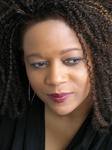 One of the least satisfying musical experiences I think I've ever had was catching Bob Dylan at the Greek Theatre in Berkeley in 2002. This is really saying something as the combination of Great Bob and the Greek ought to have been a recipe for perfection. But the singer sadly failed to deliver. He played the piano badly, slurred and bleated his words more than I've ever heard him do previously and generally made every song sound unintelligible. My friend and I spent the entire gig playing a game of "guess which famous Bob Dylan song the singer is singing right now?" More often than not, we couldn't make out the titles of his most beloved hits until the songs were halfway through.
One of the least satisfying musical experiences I think I've ever had was catching Bob Dylan at the Greek Theatre in Berkeley in 2002. This is really saying something as the combination of Great Bob and the Greek ought to have been a recipe for perfection. But the singer sadly failed to deliver. He played the piano badly, slurred and bleated his words more than I've ever heard him do previously and generally made every song sound unintelligible. My friend and I spent the entire gig playing a game of "guess which famous Bob Dylan song the singer is singing right now?" More often than not, we couldn't make out the titles of his most beloved hits until the songs were halfway through.So it was rather a relief to attend the great jazz singer Paula West's latest San Francisco Performances concert at the Herbst Theatre in San Francisco over the weekend and hear Dylan's lyrics and melodies come through loud and clear. West often includes a couple of Dylan songs in her sets. Her interpretations feel startlingly fresh even though she sticks quite strongly to Dylan's way of doing things -- you won't catch her attempting any over the top jazzy embellishments.
The main transformation that occurs when you hear the warm-granite-voiced West do Dylan is in the lyrics: You can actually understand every word that Dylan wrote, which is more than can be said of the auteur's own performances of his songs. As West stood up on stage singing "LIke A Rolling Stone" alongside the rapturous George Mesterhazy Quartet, the song span around me in a way that was completely unlike any interpretation I'd heard before. For the first time ever, I heard fallen gods and descending night in Dylan's music:
Princess on the steeple and all the pretty people
They're drinkin', thinkin' that they got it made
Exchanging all kinds of precious gifts and things
But you'd better lift your diamond ring, you'd better pawn it babe
You used to be so amused
At Napoleon in rags and the language that he used
Go to him now, he calls you, you can't refuse
When you got nothing, you got nothing to lose
You're invisible now, you got no secrets to conceal.
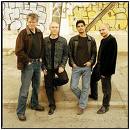
At the ensemble's latest San Francisco concert on Friday night (a benefit for the 40th anniversary of stalwart local classical music presenter Old First Concerts), at least half of the audience, by my estimation, was under 40 and quite ethnically diverse. Most of them were hipsterish in style. The girls wore vintage dresses and the guys, skinny jeans, plaid shirts, waistcoats and trainers (that's vests and sneakers to US readers.)
How does Kronos do it? I think it's the group's unflinching combination of constant exploration, fearless use of electronic and other recorded sounds and global outlook. Brand plays a key role too. The fact that the ensemble has recorded music for such culty films as 21 Grams and Requiem for a Dream and regularly collaborates with pop artists such as Sigur Ros and the Nine Inch Nails helps its image among the younger crowd.
Kronos' sound is constantly arresting. At intermission, the two young women sitting behind me were in ecstasies about what they had just heard, a freewheeling program of short works with a Middle Eastern outlook written by composers from that part of the world as well as elsewhere. They also chatted excitedly about such things as the way in which the players had swatted the air during selections from The Dead Man, John Zorn's death rattle of an homage to Robert Mapplethorpe, creating whooshing noises that were at once threatening and funny. Like Zorn, most of the scribes on the evening's roster, like the Azerbaijani composer Franghiz Ali-Zadeh and the late Nubian composer Hamza El Din, had been commissioned specially to write for the group. Knowing that Kronos can play anything, they went all out in terms of stretching the stringed instruments to their limits. Both young and old audiences in the house on Friday night seemed to revel in Kronos' endless spirit of invention.
Of course, being the big brand in town has its downsides for the chamber music community as a whole. Kronos has such a strong reputation and growing following among the 20s and 30s hipster crowd, that people, especially young people, tend to think of the group as the only string quartet in town. This is a shame as there are many other high-class ensembles working in the Bay Area such as the Alexander Cypress quartets. I hear that it's hard for these groups to attract younger audiences with Kronos stealing all the limelight.
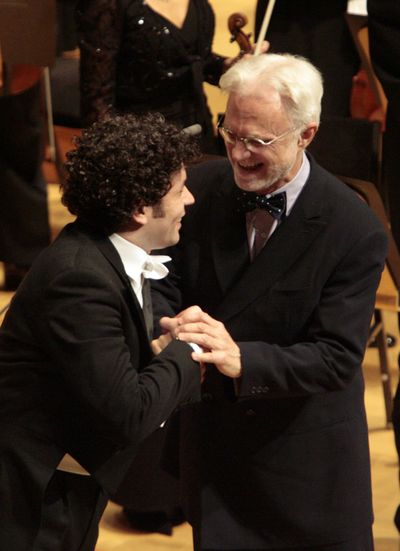 It's been a fiendish day what with hangovers and three hours of sleep to contend with. On the positive side, these signs point to the fact that Gustavo Dudamel's debut at Walt Disney Concert Hall as the Los Angeles Philharmonic's new music director last night was a raging success.
It's been a fiendish day what with hangovers and three hours of sleep to contend with. On the positive side, these signs point to the fact that Gustavo Dudamel's debut at Walt Disney Concert Hall as the Los Angeles Philharmonic's new music director last night was a raging success.I was especially impressed with the world premiere of John Adams' City Noir, a blazing symphonic work which does nothing if not bring a looming metropolis to mind in all its gritty, engulfing splendor. I was breathless by the end of the piece.
I need to go nurse my hangover, so on this occasion, I'll cop out of writing anything substantive about last night's music and festivities and leave it to the inimitable Mark Swed of the LA Times instead.
 Radio presenters -- especially ones engaged in hosting cultural programs -- are very particular about the way they pronounce proper nouns. This is of course very important: You have to get names right or you risk causing offense to the bearer of the noun in question and/or being completely misunderstood by listeners.
Radio presenters -- especially ones engaged in hosting cultural programs -- are very particular about the way they pronounce proper nouns. This is of course very important: You have to get names right or you risk causing offense to the bearer of the noun in question and/or being completely misunderstood by listeners.I was having a conversation about this topic yesterday over lunch in downtown Los Angeles with the classical music radio station KUSC's great veteran host, Jim Svejda (pictured). Jim talked about how annoying it is that radio hosts mispronounce names like John Barbirolli -- turning the penultimate noun in the faous 20th century British conductor and cellist's last name into a long "oh" instead of a short "o".
Sometimes there's a case to be made for mispronouncing proper nouns on the radio, though. A seasoned radio producer who listened to the pilot episodes of my vocal music radio series, VoiceBox, brought this fact home to me a couple of months ago when he pointed out the shortcomings of saying certain proper names in the way they absolutely should be pronounced. The name in question was Edith Piaf. On the radio, I had pronounced the French chanteuse's name with a perfect French accent, instead of employing the fashion in which the singer's name is usually pronounced in the US, with the stress placed on the first syllables, as in EEdith pEEaf. On the radio, I pronounced the name in this way: "edYt piAHf", with a clipped "e" and "t", and the stresses placed on the second syllable, rather than the first.
My pronunciation was correct by French standards. But because it sounded so different to how most American listeners would say and hear the name, it made more sense to mispronounce it on the radio than use the French articulation.
This all goes to stress one important point about speaking on the radio (or indeed any oral medium): Comprehension should be the ultimate arbiter of pronunciation.
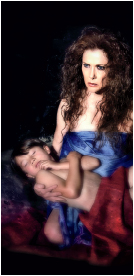 Never before have I been in a theatre with so many sleeping people.
Never before have I been in a theatre with so many sleeping people.I think I dozed off for about ten minutes or so in the middle of UCLA Live's production of Medea starring Annette Bening as Euripides' vengeful mother and wife. When I woke up to the sound of the black-rubber-suit-and-red-bustier-clad female chorus letting out a blood-curdling ululation, I noticed that my guest, the man sitting next to her, and the two people behind him were all out stone cold. To my right, the couple looked like they'd just been startled awake like me. Five minutes later, I overheard two people sitting in the row behind me a little to my left say to each other: "Should we wake Robert up?" After the play, my friend mentioned that one of the musicians on stage looked like she was in a stupor.
And here's the kicker: The show is only an hour and 15 minutes long.
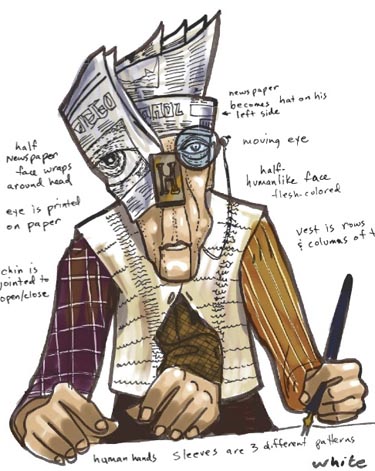 The people of the Rogue Artists Ensemble have a wonderful way of working with puppets. The Los Angeles-based theatre company is currently presenting a show based on three of Nikolai Gogol's short stories -- Diary of a Madman, The Overcoat and The Nose at the scrappy-wondrous Bootleg Theater space -- which seamlessly grafts together human and marionette actors to take the audience into an off-kilter world where surreality rules.
The people of the Rogue Artists Ensemble have a wonderful way of working with puppets. The Los Angeles-based theatre company is currently presenting a show based on three of Nikolai Gogol's short stories -- Diary of a Madman, The Overcoat and The Nose at the scrappy-wondrous Bootleg Theater space -- which seamlessly grafts together human and marionette actors to take the audience into an off-kilter world where surreality rules.The ambitious project was created on a shoestring budget, but you wouldn't know it from the quality of the acting and story-telling and the cleverly manipulated and gorgeously constructed puppet creations. Among my favorite of the puppets were the two dogs from Diary of a Madman. The puppeteers handled the mutts so brilliantly that they seemed to have absolutely distinct personalities. Other puppets, such as the old office clerk with his big, angry cuboid head and the towering, spindle-armed tailor from The Overcoat, were slightly sinister. Meanwhile, puppets like the postal workers, constructed out of stationery, also from The Overcoat, and the enormous nose puppet from The Nose, were as comical as they were works of art.
I don't often feel strongly enough about a theatrical production to think it merits the effort of touring to other places. But Rogue Artists Ensemble's Gogol Project should be seen elsewhere. I think I am going to badger some of my Bay Area producer friends to get down to LA to catch the show before it ends its run on November 1. San Francisco audiences would adore the production.
 Just about every minute of the five hours I spent sitting in the nosebleeds at the Hollywood Bowl in Los Angeles was worth the one and a half hour slog in the broiling heat I undertook to reach the venue from my friend's place in West Hollywood on Saturday afternoon. The occasion -- Gustavo Dudamel's inaugural appearance as music director of the Los Angeles Philharmonic -- was a passionate, inclusive affair which filled the 18,000-seat arena by the time the orchestra sat down to play Beethoven's Symphony Number 9.
Just about every minute of the five hours I spent sitting in the nosebleeds at the Hollywood Bowl in Los Angeles was worth the one and a half hour slog in the broiling heat I undertook to reach the venue from my friend's place in West Hollywood on Saturday afternoon. The occasion -- Gustavo Dudamel's inaugural appearance as music director of the Los Angeles Philharmonic -- was a passionate, inclusive affair which filled the 18,000-seat arena by the time the orchestra sat down to play Beethoven's Symphony Number 9.I wasn't crazy about the acoustic from where I was sitting. The Beethoven sounded much more sluggish than I expected it to. But the vistas of the huge crowds were something to behold from up high.
Some personal highlights of the afternoon/evening:
Actor/Comedian Jack Black coming on stage and remarking of the Venezuelan maestro: "Dude's on Fire!"
The Silverlake Conservatory Ensemble's take on several Stevie Wonder songs, sung with great verve by a group of young vocalists. The singers were backed by a crack team of musicians led by Flea, bassist for the Red Hot Chili Peppers, and violist, saxophonist and harmonica player Keith Barry. Barry and Flea are co-founders of the Silverlake Conservatory, a neighborhood music education center. I was really impressed by the energy and fun of this group. They performed with a lot of natural flair.
The community-mindedness of the event as a whole. The LA Phil did a pretty good job of highlighting local community music organizations, especially those that work with children. Performers other than the Silverlake group included The New Christ Memorial Church Adult and Children's Choir, the Los Angeles County High School for the Arts Jazz Band, Los Cenzontles (A youth group specializing in Mexican musical traditions founded in the Bay Area) and the the LA Phil's own YOLA Expo Center Youth Orchestra. YOLA obviously has a long way to go before it starts resembling anything like the Simon Bolivar Youth Orchestra that grew out of the Venezuelan El Sistema program upon which the LA Phil is basing its own education projects. Still, the young musicians, many of whom didn't pick up their instruments until two years ago, did a serviceable job with Steven Venz's arrangement of Beethoven's "Ode to Joy". If there was one major message to take away from the celebration as a whole, it's that Dudamel is absolutely focused on music education and multiculturalism.
Last, but not least, here's my favorite quote of the enire ¡Bienvenido Gustavo! celebration, overheard from a conversation between two nearby music journalists: "I'm glad this day is soon going to be over, cos I'm tired of looking for the upside down exclamation mark on my keyboard."
 The first ever National Arts Journalism Summit at UCLA's Annenberg School for Communication took place this morning. It was a bit of a marathon for the 200 or so people present in the room -- four hours of presentations and round table discussions with only two five minute breaks to catch our breaths and run to the loo!
The first ever National Arts Journalism Summit at UCLA's Annenberg School for Communication took place this morning. It was a bit of a marathon for the 200 or so people present in the room -- four hours of presentations and round table discussions with only two five minute breaks to catch our breaths and run to the loo!I would like to say that the event was a thumping success, but to be honest, I left feeling somewhat disappointed. There was a lot of flashy technology and fluff (300 people Twittering as we speak!" It's an exciting time!! I feel very positive about the future of arts journalism!) and at the end of the day not a whole lot of substance to the discussions.
Obviously, no one expected one four-hour-long summit to provide answers to the many pressing issues facing the field of arts journalism at the moment. But the main question on everyone's lips -- the one about business models -- ended up being avoided almost entirely or trampled on.
The truth is that even the heads of the innovative and supposedly sustainable arts journalism-oriented projects presented at the summit don't see a clear way forward. Business models, which range from paid advertising to foundation support to subscriptions, are hardly secure. When project presenters proudly declared -- as several of them did -- "we pay our journalists!" during the course of the morning, I felt my spirits sag. No one cared to admit how much they pay. To my mind, 150 dollars for an 800 - 1000 article is a pittance and, frankly, unacceptable if you're looking to publish quality work by professionals rather than the hokey ramblings of amateur art enthusiasts. But I suspect that this sort of level of compensation is at the top end of writers' pay for the projects presented at the summit.
Least satisfying of all was the final roundtable discussion between Richard Gingras, the CEO of Salon.com and Deborah Marrow, director of the Getty Foundation. Gingras basically said that arts journalists shouldn't expect money for their endeavors until they build huge capacity and attract advertising and investment. But his success story examples had nothing to do with the arts. It's one thing for a top political blogger to attract upwards of a million eyeballs a day, but even the most widely-read arts blogs can't hope to gain this sort of traction. As for Marrow, she managed to skirt each of moderator Andras Szanto's questions with a vague, empty comment and a half smile. I learned absolutely nothing about the potential role that philanthropy might play in the future of arts journalism from her. I felt quite frustrated on the moderator's behalf!
Still, I don't mean to sound so down on the event. It was a step in the right direction. Hopefully by having more of these conversations, we'll start to find a way out of the fog. Thanks to the organizers and sponsors for making the summit happen. It was a privilege to be present.
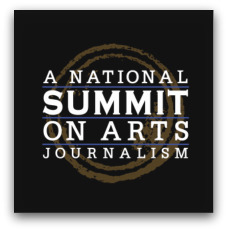 Tomorrow, - October 2 from 9AM-1PM PDT - The Annenberg School of Journalism, USC, is hosting its first ever National Summit on Arts Journalism. The summit will present ten projects in arts journalism from around America, each one geared towards saying something interesting about the future of how we cover the arts. The event will take place in the auditorium of the journalism school in front of an audience of 200 (I'll be there!), but it's primarily conceived of as a virtual online event. The Summit will be streamed here.
Tomorrow, - October 2 from 9AM-1PM PDT - The Annenberg School of Journalism, USC, is hosting its first ever National Summit on Arts Journalism. The summit will present ten projects in arts journalism from around America, each one geared towards saying something interesting about the future of how we cover the arts. The event will take place in the auditorium of the journalism school in front of an audience of 200 (I'll be there!), but it's primarily conceived of as a virtual online event. The Summit will be streamed here.You can also watch the webstream right from this blog:
Live video by Ustream
And here's where you can follow the chat stream:
 San Francisco Performances launched its 30th anniversary season yesterday evening with a recital by the great American baritone Thomas Hampson. Hampson is currently touring the US on a join project with The Library of Congress - Song of America - aimed at celebrating the history of song in this country and highlighting the library's expansive collection of scores. Hampson's repertoire encompasses music from the 1700s to the present day. Concert programs on the current tour (the second since the original iteration of the project in 2005-2006) feature Psalm settings and hymns, folksongs, cowboy songs, war songs and spirituals.
San Francisco Performances launched its 30th anniversary season yesterday evening with a recital by the great American baritone Thomas Hampson. Hampson is currently touring the US on a join project with The Library of Congress - Song of America - aimed at celebrating the history of song in this country and highlighting the library's expansive collection of scores. Hampson's repertoire encompasses music from the 1700s to the present day. Concert programs on the current tour (the second since the original iteration of the project in 2005-2006) feature Psalm settings and hymns, folksongs, cowboy songs, war songs and spirituals.Hampson looks like the quintessential American Hero on stage -- the sort of character that a Civil War era songwriter might dream of as the subject of a famous war ballad. With his stature and square-cut jaw (not to mention patriotic interests!) he reminds me strongly of the 1960s cartoon character, Roger Ramjet.
My favorite parts of last night's program were newly commissioned works by Michael Tilson Thomas and John Corigliano (both of them lush and freewheeling works in which the singer and pianist collaborate as equals) and Hampson's crowd-pleasing and emotional rendition of Shenandoah. Leonard Bernstein, Aaron Copland, and Charles Ives all made appearances as well as songs penned by lesser-known composers, including Harry T. Burleigh, Arthur Farwell, and Elinor Remick Warren.
Hampson's Song of America tour continues at Los Angeles' Dorothy Chandler Pavilion on October 3.
In other news of 30th anniversaries, Beach Blanket Babylon leading lady, Val Diamond, is retiring after 30 years in the show. Congratulations to Val.
